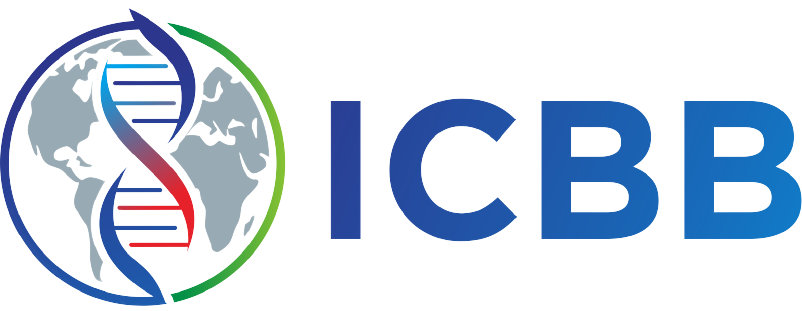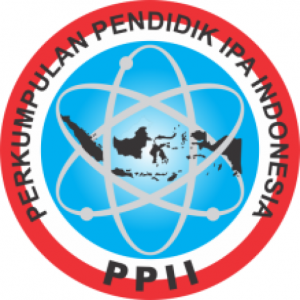The Inventory of Macroalgae in The Rengge Beach, Pari Island, Thousand Islands, Jakarta
Authors
Pinta Omas Pasaribu , Rizal Koen Asharo , Nailul Rahmi Aulya , Novia Lis Cahyati , Nurul Assyifa Wardana , Ade La Yusup , Farhana Faridah AchmadDOI:
10.29303/jbt.v23i2.6322Published:
2023-12-28Issue:
Vol. 23 No. 2 (2023): Special IssueKeywords:
Benthos belt transect, inventory, macroalgae, Pari Island.Articles
Downloads
How to Cite
Downloads
Metrics
Abstract
Pari Island is one of the islands among the Thousand Islands group, about 46.32 km from the center of Jakarta with a total area of 310,000 km2 has high biodiversity, one of which is from the macroalgae group. Although macroalgae are a source of high biodiversity, the utilization of macroalgae is still very minimal to do because of the lack of education in the community about the types and benefits of macroalgae found in waters. This study aims to determine the diversity of macroalgae in Rengge Beach, Pari Island, Kepulauan Seribu, Jakarta so that later the community can find out more information about the types, characteristics, and potential utilization of macroalgae. The research was conducted in December 2022 using the benthic belt transect method with a total of 5 stations, carried out by drawing a line from the shoreline inland with a transect length of 100 m and a width of 10 m (5 m to the right and left sides), a monitoring area of 1 km² (10x100 m) between stations. Samples were taken and identified to the species level at the Plant Structure and Development Laboratory, Biology study program, Jakarta State University, Jakarta. Observations include several characteristics both morphologically and anatomically. The results showed that there were five species of macroalgae that could be identified, namely Halimeda sp, Gracilaria sp, Turbinaria sp, Padina sp, and Sargassum sp, therefore it can be concluded that there are only five genera of macroalgae in this place. This research needs more development that can provide more benefits, one of which is to develop the research area and further identify the types of macroalgae obtained to find out more specific information about the potential of macroalgae.
References
Akbar, A. H., Adibrata, S., dan Adi, W. (2019). Kepadatan Megabentos pada Ekosistem Terumbu Karang di Perairan Desa Perlang Bangka Tengah, Bangka Belitung. Akuatik: Jurnal Sumberdaya Perairan, 13(2), 173-177. DOI: https://doi.org/10.33019/akuatik.v13i2.1621
Aulia, A., Kurnia, S. K., & Mulyana, D. (2021). Identifikasi Morfologi Beberapa Jenis Anggota Phaeophyta di Pantai Palem Cibeureum, Anyer, Banten. Tropical Bioscience: Journal of Biological Science, 1(1), 21-28. DOI: https://doi.org/10.32678/tropicalbiosci.v1i1.4355
Bennett, J. P., Robinson, L. F., & Gomez, L. D. (2023). Valorisation strategies for brown seaweed biomass production in a European context. Algal Research, 75, 103248. DOI: https://doi.org/10.1016/j.algal.2023.103248
Brown, E. R., Moore, S. G., Gaul, D. A., & Kubanek, J. (2022). Predator cues target signaling pathways in toxic algal metabolome. Limnology and Oceanography, 67(6), 1227-1237. DOI: https://doi.org/10.1002/lno.12069
Fajri, M.I. (2020). Pengaruh Jarak Tanam Rumput Laut (Sargassum sp.) yang Berbeda Terhadap Pertumbuhan. Sains Akuakultur Tropis: Indonesian Journal of Tropical Aquaculture, 4(2), pp.156-160. DOI: https://doi.org/10.14710/sat.v4i2.6920
Ghazali, M., Nurhayati, N., Suripto, S., Sukenti, K. and Julisaniah, N.I. (2021). Distribusi dan Analisa Kekerabatan Padina sp. dari Perairan Pulau Lombok Berdasarkan Karakter Morfologi. Bioscientist: Jurnal Ilmiah Biologi, 9(1), pp.10-19. DOI: https://doi.org/10.33394/bioscientist.v9i1.3544
Handayani, T.(2021). Keanekaragaman Makroalga di Perairan Teluk Kendari dan Sekitarnya, Sulawesi Tenggara. OLDI (Oseanologi dan Limnologi di Indonesia), 6(1), pp.55-69. DOI: https://doi.org/10.14203/oldi.2021.v6i1.332
Motshekga, S.C., Temane, L.T., Orasugh, J.T., Ray, S.S. (2023). Marine Algae and Their Importance. In: Soni, R., Suyal, D.C., Morales-Oyervides, L., Fouillaud, M. (eds) Current Status of Marine Water Microbiology. Springer, Singapore. DOI: https://doi.org/10.1007/978-981-99-5022-5_5
Novianty, H., Wouthuyzen, S., Abrar, M., Dharmawan, I. W. E., Rahmawati, S., Pratiwi, R., dan Cintra, A. K. A. (2020). Gugusan Pulau Pari, Kepulauan Seribu : Tinjauan Aspek Bio-Ekologi, Sosial-Ekonomi-Budaya, dan Pengelolaan Berkelanjutan. Lembaga Ilmu Pengetahuan Indonesia. DOI: https://doi.org/10.14203/press.300
Oktaviani, D.J., Widiyastuti, S., Maharani, D.A., Amalia, A.N., Ishak, A.M. and Zuhrotun, A., (2019). Artikel Review: Potensi Turbinaria ornata Sebagai Penyembuh Luka Dalam Bentuk Plester. Farmaka, 17(2), pp.464-471. DOI: https://doi.org/10.24198/jf.v17i2.22447
Osório, C., Machado, S., Peixoto, J., Bessada, S., Pimentel, F. B., & Oliveira, M. B. (2020). Pigments Content (Chlorophylls, Fucoxanthin and Phycobiliproteins) of Different Commercial Dried Algae. Separations, 7(2), 33. DOI: https://doi.org/10.3390/separations7020033
Pereira, L. dan Neto, J.M. eds. (2020). Marine Algae: Biodiversity, Taxonomy, Environmental Assessment, and Biotechnology. CRC Press. Boca Raton. DOI: https://doi.org/10.1201/b17540
Rugebregt, M. J., Pattipeilohy, F., Matuanakott, C., Ainarwowan, A., Abdul, M. S., dan Kainama, F. (2021). Potensi Rumput Laut Perairan Pulau Keffing, Seram Bagian Timur, Maluku. Jurnal Ilmu Lingkungan, 19(3), 497-510. DOI: https://doi.org/10.14710/jil.19.3.497-510
Sahroni, S., Adi, W., dan Umroh, U. (2019). Kajian Makroalga Pada Terumbu Karang Di Perairan Turun Aban. Aquatic Science, 1(1), 14-19. URL: https://journal.ubb.ac.id/aquaticscience/article/view/872
Salbitani, G., & Carfagna, S. (2020). Different Behaviour between Autotrophic and Heterotrophic Galdieria sulphuraria (Rhodophyta) Cells to Nitrogen Starvation and Restoration. Impact on Pigment and Free Amino Acid Contents. International Journal of Plant Biology, 11(1), 8567. DOI: https://doi.org/10.4081/pb.2020.8567
Tkachenko, F. P., & Yakuba, I. P. (2019). Fucoxanthine Content in Some Black Sea Brown Algae (Ochrophyta, Phaeophyceae). International Journal on Algae, 21(4). DOI: https://doi.org/10.1615/InterJAlgae.v21.i4.70
Wang, Y., & Qi, H. (2022). Natural Bioactive Compounds from Foods Inhibited Pigmentation Especially Potential Application of Fucoxanthin to Chloasma: a Mini-Review. Food Reviews International, 1-17. DOI: https://doi.org/10.1080/87559129.2022.2148690
Warta, I. N. (2023). Efek Iklim Ekstrem dalam Kehidupan. Widya Aksara: Jurnal Agama Hindu, 28(2), 180-191. DOI: https://doi.org/10.54714/widyaaksara.v28i2.234
License
Copyright (c) 2023 Pinta Omas Pasaribu, Rizal Koen Asharo, Nailul Rahmi Aulya, Novia Lis Cahyati, Nurul Assyifa Wardana, Ade La Yusup, Farhana Faridah Achmad

This work is licensed under a Creative Commons Attribution 4.0 International License.

Jurnal Biologi Tropis is licensed under a Creative Commons Attribution 4.0 International License.
The copyright of the received article shall be assigned to the author as the owner of the paper. The intended copyright includes the right to publish the article in various forms (including reprints). The journal maintains the publishing rights to the published articles.
Authors are permitted to disseminate published articles by sharing the link/DOI of the article at the journal. Authors are allowed to use their articles for any legal purposes deemed necessary without written permission from the journal with an acknowledgment of initial publication to this journal.


























